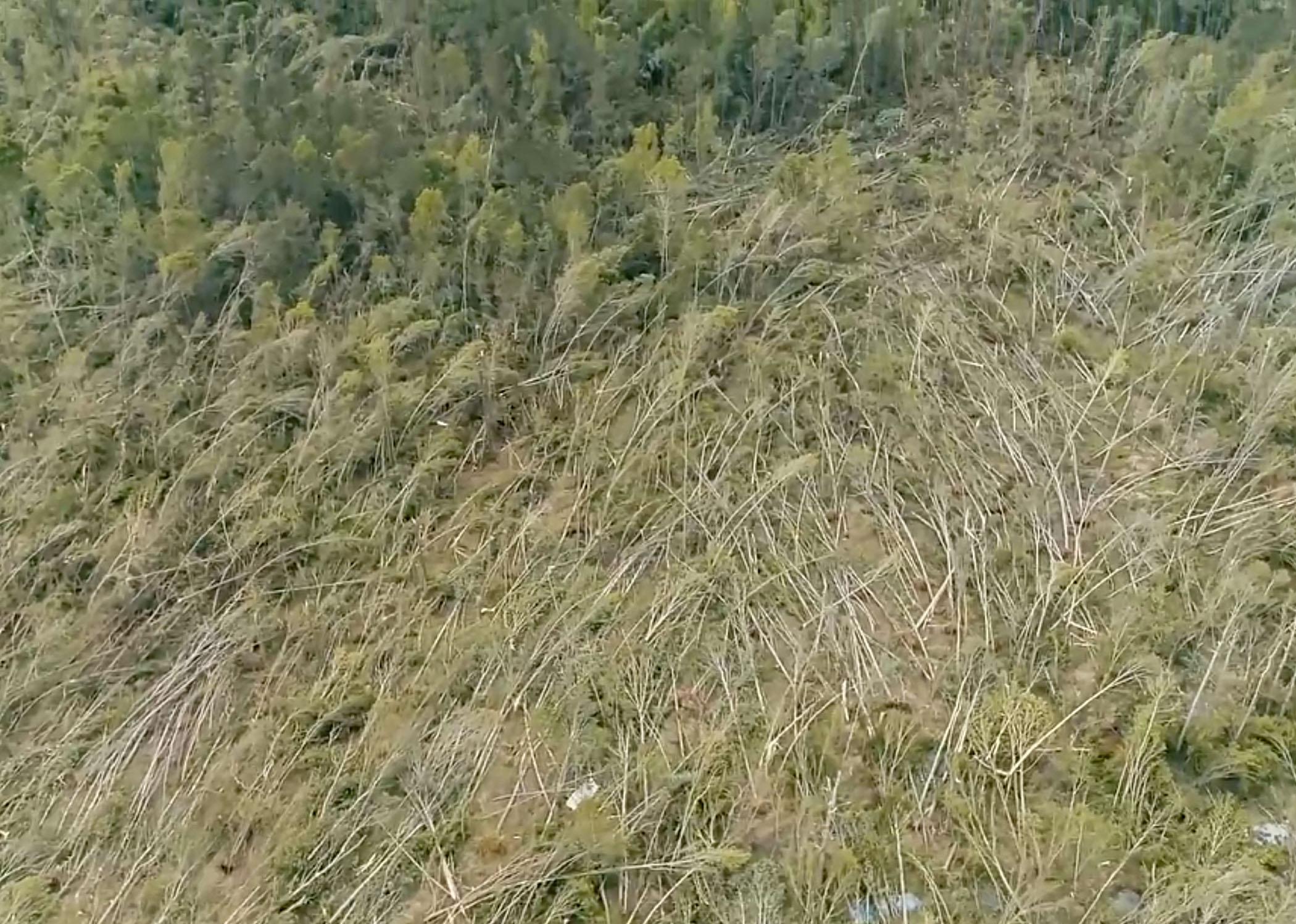Information Possibly Outdated
The information presented on this page was originally released on April 16, 2020. It may not be outdated, but please search our site for more current information. If you plan to quote or reference this information in a publication, please check with the Extension specialist or author before proceeding.
Extension personnel are in overdrive during emergencies
STARKVILLE, Miss. -- One of Kim Hancock’s routine jobs is assisting 4-H’ers in Jones County with their livestock projects. On Easter Sunday, she was helping some of those same young people and their families sort through the rubble of what was once their homes.
Thirty-two counties in Mississippi reported damage from a tornado outbreak April 12 that resulted in 12 fatalities, many injuries and catastrophic destruction to residential, commercial and agricultural property.
“After the storm came through, we received texts from friends saying that they were trapped and had lost everything,” said Hancock, an agent with Mississippi State University Extension. “As soon as the weather cleared, we headed to them with chainsaws and other equipment to get them out. It blessed my heart to see everyone coming together to help.”
MSU Extension is a supporting organization in the Mississippi Emergency Management Agency’s emergency management plan. Hancock is one of more than 150 Extension agents in the state’s 82 counties who assist local emergency personnel in the mass care and nourishment of those who are displaced or without resources after disasters, as well as the care of livestock, row crops and domestic animals.
“We have had agents assist with food distribution to victims of the tornadoes and first responders as well as assisting those impacted document the damage and direct them to sources of financial assistance,” said James Henderson, head of the MSU Coastal Research and Extension Center in Biloxi.
The expertise of Extension faculty and staff in forest management is also in high demand after any weather event. According to an aerial damage assessment by the Mississippi Forestry Commission on April 14, nearly 13,000 acres of private forestland in the southern half of Mississippi totaling almost $15 million in value was damaged.
Shaun Tanger, Extension forestry specialist, is among several faculty and staff preparing webinar presentations for affected landowners on salvaging storm damage to timber.
“The general questions we get involve determining whether standing trees in their timber stands are salvageable, how to get a logger to their property to haul wood away and how to get tax deductions for what they have lost,” Tanger said. “When you are in a salvage scenario, snapped trees will typically be processed as pulpwood. Mills and markets then become flooded with this product, which drives down value. Our presentations and publications are resources landowners can use to make the most profitable decisions they can based on the condition of their stand.”
MSU Extension forestry economist Marc Measells has received calls from timber managers with forestland compromised by the storms and expects to receive more in the coming weeks.
“We had one mill -- Barge Forest Products in Macon – sustain too much damage to be operational at the moment,” Measells said. “As for owners of private forestland, we are trying to help them decide what to do next, whether it’s possible to salvage some of their timber or if they need to do a clear cut and start over.”
Extension is involved in relief efforts as the state continues to be under a shelter-in-place order issued April 1 to prevent the spread of COVID-19. As of April 15, 3,360 cases of the virus were reported in Mississippi, including 122 deaths.
“This pandemic and the guidelines in place to mitigate it forces people to social distance from others as they pick up the pieces, which presents a challenge to our personnel that they’ve never seen,” Henderson said. “The overlapping of these two crises has complicated matters.”
Twelve agents in 10 counties hardest hit by the storms, mostly across the state’s southern half, have been assigned by their local emergency management coordinators to conduct damage assessments. This involves meeting with producers in their areas who have lost chicken houses, livestock, barns, equipment, livestock fencing, or timber. Agents document the damage and direct producers to state and federal programs that can provide emergency funding.
In Covington County, where two tornadoes within miles of each other wreaked havoc on everything in their path, there was more than $3 million in residential damage alone, according to EMA director Greg Sanford. Extension agent Ellen Russell has worked with Sanford to begin damage assessment for agricultural property.
“Ellen actually opened the multipurpose facility here that serves as our tornado shelter before the storms hit,” Sanford said. “Everyone in Extension has always worked well with us and stepped up to the plate to aid in all our previous recovery efforts as well as this one.”
After meeting with local officials with the USDA Farm Service Agency, Russell informed producers that some avenues for relief include the Livestock Indemnity Program, the Emergency Conservation Program and the Emergency Livestock Assistance Program.
“We took a huge hit to homes, barns, vehicles, poultry farms, and stocker cattle and cow calf operations,” Russell said. “The initial response was chainsaw crews working to open roads, restore power and secure livestock lost due to downed fencing. We are working to help organize local nonprofit organization and cleanup crews, locate missing cattle, and collect and distribute supplies.”
Hancock acknowledged her clients needs will change on a daily basis as they begin rebuilding their lives.
“As I go through each day, I am sure many other needs will arise,” she said. “Extension agents support each other and their communities, and we will all continue to assist the victims of this catastrophic event.”














